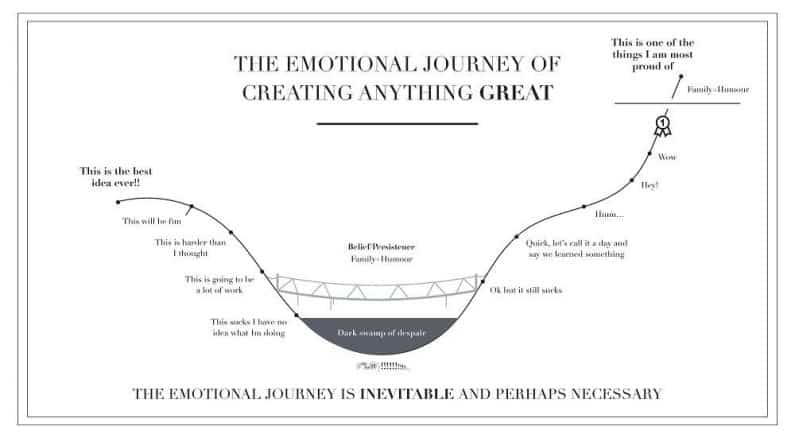
by Diana Southall | Jan 10, 2017 | action plans, planning
I often spend time with clients and other business owners who are full of ideas– so many they don’t know where to start, or they starting working on 2 (or 10) without much progress. Their head and office notebooks are littered with the ghosts of projects past.
I heard another business owner Amy call this being an “idea hamster”– what a great term!
You have an idea, and another idea, and another one, and you start running on that hamster wheel spinning and going no where.
Sound familiar? I know that it does for me, I struggle every day with being a reformed hamster.
Here are six key steps that have made a difference for me to complete something important [as Seth Godin calls it “shipping”]:
- Write a destination postcard for the end of the year– what you plan to accomplish
- From the postcard results, generate a long list of potential projects and categorize by type [are they planning, sales, marketing, people, operational?]
- Now rate those projects on effort and on impact on your goals — then rank by those with the highest impact and the lowest effort — these are your short list– put the rest into a “parking lot” [crucial step 1- they are always there to be re-considered.]
- Prioritize the list of projects— does one have to be completed for another to be effective? Does one address a burning issue or roadblock to growth? Rank them and put a guestimate on the number of weeks to complete.
- Select the Number One priority project, get your team together, make an action plan to divide up the tasks and start chipping away every week.
- Crucial step 2– do not start another project until this one is complete!
Do not get distracted by the next shiny thing, just keep momentum on that project. Focus on the next step, one at a time, every week.
Get your team concentrating on just one task and making progress. Yup, it’s hard to do but any change in habit is challenging.
{See the great graphic above that I think captures what we all go through! This is great, this is hard, this sucks… dark swamp of dispair…}

by Diana Southall | Dec 5, 2015 | planning
As another calendar year winds down, many organizations are focused on a strong finish to this year and planning for the next one.
Typically this centers on the financial side of the business.
As you do your year-end de-briefing, why don’t you also ask yourself “What did I enjoy this year? Did I make the impact I expected?”
Certainly we are in business for financial rewards, but I suspect you also want the rewards of feeling accomplished, fun, freedom and flexibility.
Even the business owner deserves to have a role they love, a sense of accomplishment and “work life” balance (not a J.O.B.)
So as you plan for your business next year, why not re-imagine your role?
For myself, I outlined a weekly action plan to create by “best year ever.”
Here is the outline, and the next 5 weeks– if you would like to join me and re-define your role next year.
My 30 day plan for my (your) best year ever:
- Week 1- identify your *“ikigai” – the genius that you bring to the world and that you love to do [see ikigai image above]
- Week 2 –write up your current “job description” and then create your ideal job profile
- Week 3—highlight your delegation wish list — and who you can give to now or train for the future
- Week 4- meet with those “delegatees” and share your ideas for these new duties, if they agree and commit
- Week 5 – develop quarterly training action plans for the people with delegated items (to prevent your excuses above to keep these activities)
- Week 6 and beyond— focus and maximize your time- schedule your important work first, build the habits and track your progress, implement weekly huddles and quarterly action plan meetings

by Diana Southall | Aug 21, 2015 | action plans, job fit
How do you possibly find out the needs and motivators for each person on your team, and then maximize their strengths and give them what they desire?
After all, your team is made of individuals, all with their own strengths, weaknesses (or as I like to call them, “areas of non-fit”), personality quirks and idiosyncrasies.
As a client’s manager once phrased it, “we have 100 people and we have 100 different personalities! I realize I have to treat each one differently.” Truer words were never spoken, Bill C.
Fortunately, even though every person might need a different approach and respond to individualize coaching, you can start the “strength building process” by categorizing in two key areas: performance and commitment.
In fact, I designed a template that allows you to profile your team on these two key elements, and then created a matching “Action Plan” focus for each one.
Every time I use this “blueprint” with clients, a lightbulb goes off about at least one employee “Oh, that is why I am struggling with this person” or “Oh no, I should have that conversation I have been putting off soon—they might be looking for another job.”
Mapping out your team also helps you prioritize your coach efforts for fast results or avoiding a disaster — by focusing on the most urgent situations first. (A word of caution, don’t ignore the middle for too long, but that is for another blog article.)
We use this proven tool with clients to focus and prioritize weekly coaching conversations for maximum benefit (as part of the development action plan process).
How to get started mapping your team
- Download your copy of the People + Performance Profiler here
- Read the instructions to create your People Profile
After mapping your team, start the discussion and development action plan process to find out what each person wants from your job, and jointly create the path to get there.
If you develop the trust and the relationship with positive and appreciative discussions, they will tell you what motivates and engages them so you can give it to them.
Image provided by stock images, freedigitalimages.net

by Diana Southall | Aug 7, 2015 | action plans, coaching, culture
A new software for small business owners is called “17 hats” – and I think this accurately reflects the roles of a small business owner. You are chief everything officer (sales, people, operations, marketing, accounting, customer service), cheerleader and spokesperson, and as my family says “chief bottlewasher!” (if it needs to get done, you will do it.)
So it is no wonder you feel like you don’t have time to coach your team members monthly (much less weekly).
And no doubt some people on your team are easier to coach than others, so you tend to procrastinate in delivering feedback or talking about what would challenge and motivate them.
The data is clear—employees don’t just want daily task discussions (called “Managing by Wandering Around” by Tom Peters)—
Employees want to know how they can contribute, what is the purpose of their work, feedback on results, and that there are opportunities to develop and maximize their strengths at your organization.
This means you need a development plan for each person, coupled with regular two-way discussion on their aspirations and challenging assignments that meet their desired career path. (That is what we mean when we say “coaching.”)
If all of your conversations center around “what are you working on today” then they feel ignored, and will lose interest, commitment, and engagement in your job. (Reminds me of the joke – “I feel like a mushroom, left in the dark and fed manure.”)
Ultimately these unnoticed people will seek employment elsewhere where they can feel appreciated, a sense of accomplishment and contribution.
Or worse, stay in your job as “actively disengaged” working against your team. (Read my article—Want Employees to Tune Out? Ignore Them to find out the huge cost of the disengaged).
Every small business owner or manager can be a motivational, positive, and appreciative leader and implement a rhythm of weekly coaching conversations.
You just need a blueprint and training, and the willingness to learn and get outside your comfort zone to start having real conversations with your staff.

by Diana Southall | Jun 16, 2015 | action plans, coaching, culture, job fit, performance
Zenger Folkman report that employees who are the most satisfied and committed work for leaders who do 4 crucial “behaviors that focus on achieving challenging goals”
- Inspire them to high levels of effort
- Energize them to achieve exceptional results
- Create an atmosphere of continual improvement
- Skillful at getting them to stretch for goals that go beyond what they originally thoughts was possible
BAM- that sounds like a recipe for some high performing work!
To put it another way:
- These managers have a People Plan for each person with mutually beneficial projects and work that are designed to be challenging.
- This “stretch” work naturally develops the team member, and keeps her energized and inspired (and doing her best work).
- Employees feels that “the company provides excellent learning and growth opportunities for my own development.” (This is the key to keeping employees from looking for another job.)
- The positive coaching provided by the manager creates a team culture to perform at a high level, and this positive “peer pressure” continually reinforces the positive behaviors and outcomes.
This is the magic atmosphere where employees are engaged… performing with discretionary extra effort.
The most successful employers have 70-80% engaged employees, the worst 10-20%.
What if 7x more employees were terrific at their job- would that make a different to your team atmosphere and achievement?
If you want your department, your location, your organization to succeed- the key is managers who can positive coach and challenge the team to outperform every day.








